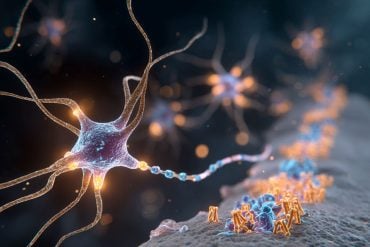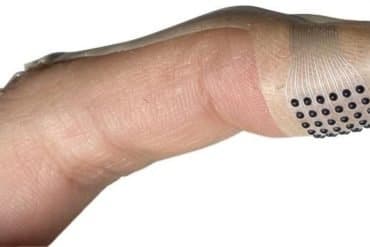Summary: A new study reveals that more than two-thirds of people living with chronic pain turn to comfort foods—especially chocolate—for emotional relief and distraction during flare-ups. Eating provides temporary pleasure and even mild pain relief, likely due to biological effects of high-calorie foods on the brain’s reward and pain systems.
However, this short-term comfort can spiral into long-term harm, as weight gain and inflammation can worsen pain and create a self-reinforcing cycle. The findings highlight the need for pain management programs to include dietary guidance and healthier coping alternatives.
Key Facts:
- Emotional Relief: 68% of participants used food to cope with pain, mainly for pleasure or distraction.
- Biological Reward: High-calorie foods can trigger mild pain-relieving effects, possibly via brain chemistry.
- Vicious Cycle: Comfort eating may ease pain temporarily but worsens inflammation and chronic pain over time.
Source: University of Technology Sydney
More than two-thirds of people living with chronic pain reach for chocolate or other comfort foods to cope, with new research showing that eating offers pleasure, distraction and relief from negative emotions during pain flare-ups.
One in five people worldwide lives with chronic pain (pain lasting three months or more), making it a major public health issue. Comfort eating is a common response to pain, but this can lead to weight gain, which in turn can worsen pain and increase the risk of further health problems.

Professor Toby Newton-John, Head of the Graduate School of Health at the University of Technology Sydney (UTS) says understanding the psychology behind comfort eating is crucial for developing effective pain management strategies, and preventing a negative cycle.
“People who live with pain every day need to find ways of coping. We think about medication, physiotherapy or heat packs as pain management strategies, but we don’t usually think about food in the same way. Yet two-thirds of our sample said they turned to food at least once a fortnight when pain flared.”
The study, Eating to Feel Better: The Role of Comfort Eating in Chronic Pain, was published in the September issue of the Journal of Clinical Psychology in Medical Settings, with co-authors Claudia Roche, Dr Amy Burton and Professor Newton-John.
The researchers surveyed 141 adults with chronic pain about why they reach for food when pain flares. The results showed the main reason for pain-induced comfort eating was ‘to have a pleasant experience’ (51.8%), followed by ‘distraction’ (49.6%) and ‘to reduce emotions’ (39%).
“That was the somewhat unexpected finding,” says Dr Burton, a lecturer in clinical psychology at the UTS Graduate School of Health.
“Comfort eating wasn’t just for the purpose of distraction or numbing negative feelings, although those were important too. For many, eating comfort foods provided a nice experience in their day and something to look forward to. If you’re living with pain all the time, that moment of pleasure becomes a pretty powerful motivator.
“There may also be a biological explanation. Research shows high-calorie foods can have a mild pain-relieving effect. Even in animal studies, rats in pain will seek out sugar. It seems it’s not just psychological. It’s possible that there is a real analgesic property to these foods as well,” she says.
However, the comfort comes at a cost. Almost 40 per cent of participants in the study met the criteria for obesity, and Professor Newton-John warns that food-driven relief can become part of a vicious cycle, where each condition exacerbates the other.
“In the short-term, high-calorie food makes people feel better. It reduces pain symptoms and enhances pain tolerance. Long-term, it can fuel weight gain and inflammation, which increases pressure on joints and makes pain worse; and that can trap people in a spiral that’s very hard to break.”
Pain management programs usually focus on medication use and physiotherapy techniques. This research suggests a need to integrate dietary advice into pain management programs to offer alternatives to food coping mechanisms.
“We usually teach skills like relaxation, stretching exercises or how to pace activities, but we rarely talk about food in this context,” Professor Newton-John says. “This work shows we need to help people recognise if they’re using food as a pain-management tool and give them alternatives.”
At the same time, Professor Newton-John stresses the findings should not be used to blame people living with chronic pain for being tempted by a short-term fix.
“Managing daily pain is incredibly tough, and medication often only goes so far. It’s understandable that people reach for something that feels good. But awareness is key, both for clinicians and for patients, to escape this cycle.”
Key Questions Answered:
A: Eating provides distraction, emotional relief, and pleasure during pain flare-ups, which can make life feel more manageable.
A: Both. High-calorie foods may trigger mild pain relief through biochemical pathways, while also offering psychological comfort.
A: Over time, comfort eating can cause weight gain and inflammation, worsening pain and creating a difficult cycle to break.
About this diet and pain research news
Author: Leilah Schubert
Source: University of Technology Sydney
Contact: Leilah Schubert – University of Technology Sydney
Image: The image is credited to Neuroscience News
Original Research: Open access.
“Eating to Feel Better: The Role of Comfort Eating in Chronic Pain” by Toby Newton-John et al. Journal of Clinical Psychology in Medical Settings
Abstract
Eating to Feel Better: The Role of Comfort Eating in Chronic Pain
Research has identified that individuals with chronic pain comfort eat in response to their pain, however, little is known about the function that comfort eating serves for chronic pain patients.
Given the synergistic relationship between higher body weight and chronic pain, it is important to further understand the role and impact of eating behaviours, such as comfort eating, for individuals with chronic pain.
This study aimed to investigate the perceived function of pain-induced comfort eating for chronic pain sufferers.
Adult participants (N = 141) with chronic pain were recruited through online advertisements. Participants completed self-report questions on an online survey platform.
Over two-thirds of the sample identified with engaging in comfort eating in response to chronic pain flare-ups.
Results revealed that the most endorsed function of pain-induced comfort eating was ‘to have a pleasant experience’ (51.8%), followed by ‘distraction’ (49.6%) and ‘to reduce emotions’ (39%).
This study provides further evidence that comfort eating is common amongst individuals with chronic pain and sheds light on the perceived function of comfort eating for those who are managing chronic pain.
Given the potential impact on outcomes for chronic pain patients, future studies should further investigate the relationship between comfort eating and chronic pain.






